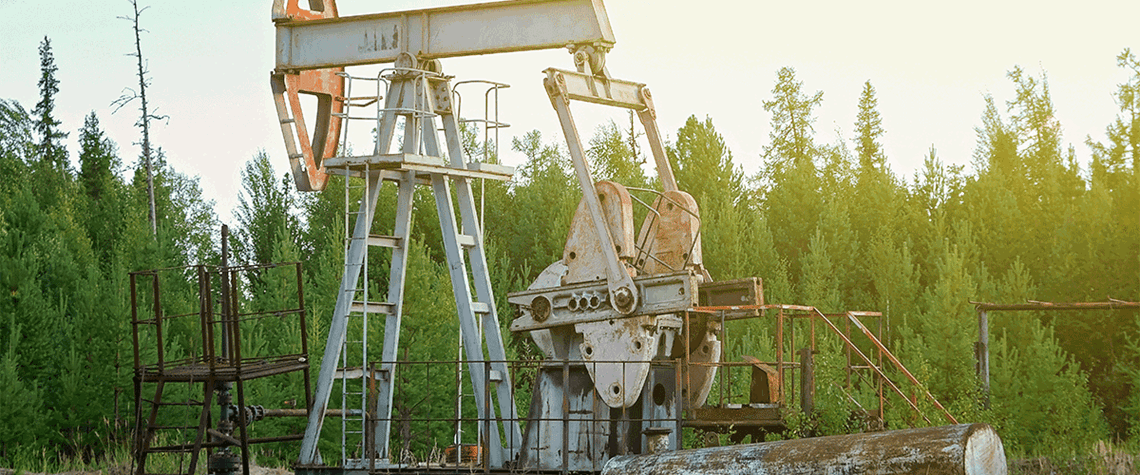The American Carbon Registry (ACR), a greenhouse gas registry, has released a methodology for creating carbon offset credits from plugging orphaned oil and gas wells.
These offset credits will be the first of their type to be issued through a major registry for the voluntary carbon market (VCM). They have the potential to considerably supplement recent government funding allocated to address this environmental and public health problem, and can focus remediation efforts specifically on methane emissions.
Although there are arguably some differing interpretations, oil and gas wells that have not been operated and maintained in accordance with prevailing regulation are categorised as abandoned. Orphaned wells are a subset of abandoned wells for which no owner can be determined.
Estimates of the number of abandoned oil and gas wells in the US run as high as 4mn, although forming a good estimate is difficult as most were drilled before 1960—when there was little record keeping and generally no regulation to retire the wells.
Abandoned wells are known to emit hydrogen sulphide, arsenic, benzene and methane and thus are considered hazardous to public health and the climate. Their aggregate global warming impact is similarly hard to assess, however, as methane emissions have been measured on fewer than 1pc of the estimated abandoned well count and have exhibited wide variation. With that said, for reference, the Environmental Protection Agency has estimated the average unplugged abandoned well emits 0.13t/yr of methane, which with 4mn wells is thought to be equivalent to the carbon emissions of 100,000 cars driving in the US for one year.
Government funding
The US has recently taken steps to foster more plugging of abandoned wells, which is the means to stop their emissions safely and permanently. Most prominently, Congress provisioned $4.7bn in 2021 in what is known as the Bipartisan Infrastructure Law (BIL). As of late last year, $560mn had been awarded, via the first of three grants, to 24 participating states, while another $33mn was targeted for federal and tribal lands.
The awards offer a view on the per well costs and illustrate that BIL funding, even if fully allocated, can address only a small percentage of the abandoned wells in the US. These 24 states targeted 9,000–10,000 wells to plug with the funds, an average of $56,000–61,000 per well.
Importantly, there are relatively few strings attached to BIL funding, with the impact that the amount of methane emission reduction is even more uncertain. The Department of Interior recommends, but does not require, that each state create a prioritisation process, which can be based on public health, safety, environmental or financial benefits.
Further, whereas the department initially recommended that each state develop a methodology to track and measure all emissions before and after the plugging operation, such advice was eased when some states indicated they were not equipped to do so.
Methodology
ACR’s orphaned oil and gas well retirement methodology sets the basis for issuing carbon offset credits, which can be sold on a VCM to support well-plugging and site reclamation. Like all VCM methodologies, it specifies how to establish the baseline, i.e., the emissions that would continue if the well plugging project did not take place, and it requires proof the emissions have ceased upon completion of the project.
Both are relatively straightforward for orphaned wells, as single site measurement (before and after the plugging operation) is inexpensive and reliable. And whereas methane emissions from producing wells are highly variable even over short time periods, it has been determined that abandoned wells leak methane at a relatively constant rate for decades.
Another facet of offset credit integrity is additionality, which in this case must address the question: “Are offset credits being issued for plugging a well that would have been plugged anyway, either due to regulation or based on an alternative source of funds?” Challenges to additionality have been the key area of integrity focus in other VCM methodologies, particularly related to nature-based solutions and renewable energy.
To address the first concern raised in the above question—eligibility—ACR has specifically limited the scope in its methodology to orphaned wells, for which there is no recourse to a company to do the retirement work. For reference, company startups have introduced their own protocols and credit-issuing platforms for retiring other types of oil and gas wells.
As for funding sources, the amounts in bonding pools, fees and the BIL appropriation are insufficient to cover more than a small portion of the abandoned wells and, as noted above, it is by no means a given that the BIL funds will be put to high methane-emitting wells.
ACR’s methodology marks the first among the major offset credit registries for the purpose of plugging oil and gas wells, which is a milestone for wider issuance. At least one company, environmental firm Rebellion Energy Solutions, is poised to get to work using proceeds from these credits; others are positioning to follow. They mark the beginning of what should prove to be a large-scale source of high integrity offset credits, funding action to deliver environmental, climate and public health benefits throughout the US.









Comments